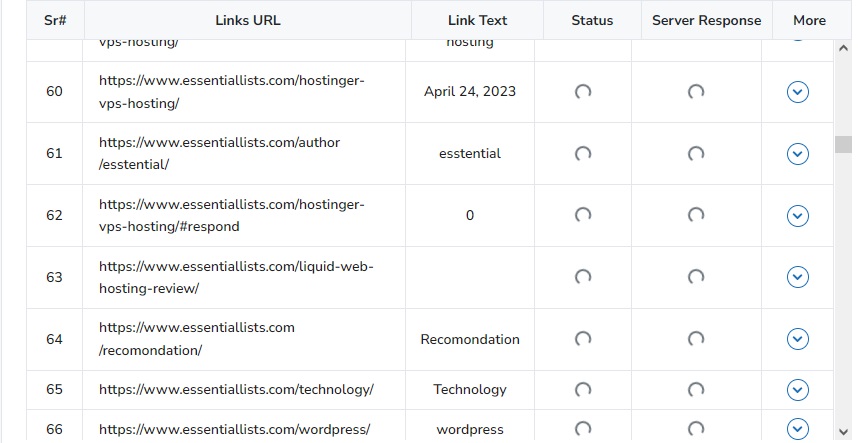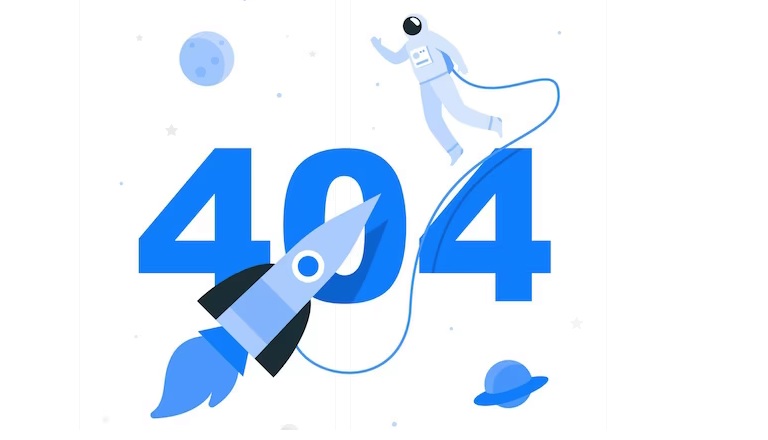Broken link checkers how it help in seo
In the ever-evolving landscape of the internet, websites play a pivotal role in disseminating information, promoting businesses, and connecting people globally. However, the effectiveness of a website is heavily reliant on its content and functionality. Broken links, which are hyperlinks that lead to non-existent or inaccessible web pages, can undermine a website’s credibility, user experience, and search engine rankings. In this essay, we will delve into the significance of broken link checkers, their benefits, and the best practices for ensuring a seamless online experience.
What is broken links?
In the digital realm, broken links can often disrupt the seamless flow of online experiences. Not only do they frustrate users, but they also wield a detrimental impact on a website’s SEO performance. This essay delves into the critical matter of broken links within the SEO landscape, revealing their adverse effects and offering strategic remedies.By comprehending these implications and adopting effective mitigation strategies, website owners can safeguard their SEO efforts, ensuring a seamless online experience and optimal search engine performance.
Addressing the negative SEO implications of broken links requires proactive measures:
- Regular Link Audits: Conduct routine checks to identify broken links and promptly address them.
- 301 Redirects: Implement proper redirects for moved or deleted content to maintain link integrity.
- Custom 404 Pages: Design user-friendly error pages with navigation options to retain users.
- Monitoring Tools: Leverage online tools to scan for broken links and receive alerts.
1. Crawlability and Indexing Woes
For search engines, the process of indexing a website involves crawling through its various pages via the links provided. However, the presence of broken links impedes this process. Search engine crawlers expend their limited crawl budget on non-functional links, leaving important content unexplored. As a result, the visibility of a website’s valuable pages in search results is compromised.
2. User Experience Erosion and Bounce Rates Surge
Broken links directly undermine the user experience, leading to frustration and disappointment. When users encounter a non-functional link, they are likely to bounce back to the search results or exit the website entirely. High bounce rates signal to search engines that the content is not relevant or valuable, potentially causing a decline in rankings.
3. Link Equity Drain and PageRank Deterioration
Link equity, the SEO value passed between linked pages, plays a crucial role in establishing a website’s authority. Broken links disrupt this flow of authority, resulting in PageRank leakage. When search engines encounter a broken link, they are unable to pass along the intended value to the linked page, diminishing the overall SEO strength of the website.
In the intricate web of SEO, broken links emerge as potent adversaries. Their ability to disrupt crawlers, erode user experience, and drain link equity underscores their detrimental impact.
The Importance of Broken Link Checkers
- Enhancing User Experience: A smooth navigation experience is paramount for retaining visitors on a website. Broken links frustrate users, leading to increased bounce rates and decreased engagement. Broken link checkers help identify and rectify these issues, resulting in an improved user experience.
- Preserving Credibility: Websites with broken links convey a sense of neglect and unprofessionalism. Visitors may question the accuracy and reliability of the information presented. Regularly monitoring and fixing broken links showcase a website’s commitment to providing up-to-date and accurate content.
- Search Engine Optimization (SEO): Search engines, like Google, consider broken links as a sign of poor website maintenance. Such links disrupt the smooth crawling of web pages, potentially affecting the website’s search engine ranking. Utilizing broken link checkers can contribute to a healthier SEO profile.

Benefits of Broken Link Checkers
- Time and Resource Efficiency: Manually identifying broken links in a large website can be a time-consuming endeavor. Broken link checkers automate this process, saving valuable time and resources for website administrators.
- Comprehensive Link Scanning: Advanced broken link checker tools are designed to scan websites thoroughly, including internal and external links, images, and other media files. This comprehensive scanning ensures that no broken links go unnoticed.
- Mitigating SEO Impact: Broken links can have a negative impact on SEO by affecting the website’s crawlability and indexing. By promptly addressing broken links, websites can maintain a healthy SEO profile and enhance their chances of ranking higher in search engine results.
- Improved Website Reputation: Consistently providing users with functional links showcases a website’s commitment to a positive user experience. This, in turn, enhances the website’s reputation and fosters trust among visitors.
Best Practices for Using Broken Link Checkers
- Regular Scans: Perform routine scans using broken link checkers to identify new broken links that might arise due to changes in content or website structure.
- Prioritize Internal and External Links: While internal links enhance user navigation, external links provide additional resources. Both types should be regularly checked to maintain a seamless browsing experience.
- Implement Proper Redirection: In cases where a broken link cannot be immediately fixed, implement proper redirection to guide users to relevant content.
- Update Links During Content Changes: When content is updated or pages are moved, ensure that corresponding links are also updated to prevent broken links.
- Choose Reliable Checker Tools: Select reputable and updated broken link checker tools that provide accurate results and robust scanning capabilities.

Common Causes of Broken Links
- Page Deletion or Restructuring: As websites evolve, pages might be deleted or restructured. This can result in links pointing to non-existent URLs.
- Incorrect URL Entry: Manual entry of URLs can lead to typographical errors, rendering the links broken.
- External Site Changes: Websites that you link to might undergo changes or be taken down, resulting in broken outbound links.
- Link Aging: Over time, external websites might change their content, URLs, or domain names, leading to broken links.
- Protocol Changes: If a website switches from HTTP to HTTPS or vice versa without proper redirection, it can result in broken links.
Advanced Broken Link Checker Features
- Reporting and Notifications: Comprehensive broken link checkers offer detailed reports and send notifications when broken links are detected. This feature ensures prompt action.
- Scheduled Scans: Set up automatic scans at regular intervals to proactively identify broken links as soon as they appear.
- Link Validation Thresholds: Some tools allow you to set thresholds for broken link validation. For example, you can choose to ignore temporary connection errors and validate the link again later.
- Bulk Link Editing: To save time, certain tools enable bulk editing of broken links by providing options to update, remove, or redirect them.
- Deep Link Analysis: Advanced tools provide insights into link health by analyzing response codes, anchor text, and other relevant metrics.
Impact on SEO and User Experience
- SEO Ranking: Search engines consider user experience as a ranking factor. A website with numerous broken links may experience a drop in search engine ranking due to reduced user engagement and credibility.
- Crawl Budget Utilization: Search engine crawlers allocate a limited budget to each website. Broken links waste this budget, preventing crawlers from indexing valuable content.
- Visitor Frustration: Users encountering broken links are likely to leave the website in frustration, resulting in higher bounce rates and lower dwell times.
- Conversion Rates: Broken links disrupt user journeys, potentially leading to lost conversions, sales, or sign-ups.
Steps to Address Broken Links
- Regular Audits: Perform regular audits using broken link checkers to identify and fix broken links promptly.
- 301 Redirects: When a page is moved or deleted, use 301 redirects to guide users to the most relevant alternative page.
- Custom 404 Pages: Create custom 404 error pages that provide helpful navigation options when users encounter broken links.
- Backlink Outreach: If you find broken external links pointing to your site, consider reaching out to the linking site and suggesting a fix.
- Content Updates: When updating or revising content, ensure that associated links are updated as well.
Future Trends in Broken Link Management
- AI-Powered Scanning: Artificial intelligence can enhance the accuracy and speed of broken link detection.
- Mobile-Focused Checks: With the increasing use of mobile devices, broken link checkers might offer specialized mobile scanning features.
- Integrated SEO Suites: Broken link checkers may become integrated into broader SEO suites, providing a holistic website health analysis.

The Technical Mechanism of Broken Link Checkers
Broken link checkers operate by employing web crawling and HTTP requests to scan the entire website for links. Here’s a simplified breakdown of their functioning:
- Crawling: The tool starts by crawling the website, following each link it encounters.
- HTTP Requests: As the tool accesses each link, it sends an HTTP request to the linked page’s URL.
- Response Analysis: The tool receives responses from the URLs, such as 200 (OK), 404 (Not Found), or 500 (Internal Server Error).
- Broken Link Identification: The tool identifies links that receive error responses (like 404 or 500) as broken links.
- Reporting: The tool compiles a report with the list of broken links and provides details about the pages where they are found.
Balancing Broken Link Removal and Redirection
While removing broken links is a common approach, there are instances where redirection might be more appropriate:
- Content Updates: If the content associated with a broken link has moved to a new URL, a 301 redirect can ensure users find the updated content.
- Linking to External Sites: If an external site you’ve linked to goes down or changes its URL structure, consider finding an alternative source to link to.
- Redirection Mapping: Maintain a redirection map that outlines which broken URLs should be redirected to which working URLs.
The Role of Broken Link Checkers in Content Management
- Content Governance: Broken link checkers aid content governance by ensuring that external sources cited in articles remain valid and reliable.
- Link Auditing: For larger websites with numerous pages, broken link checkers streamline the auditing process by quickly identifying issues.
- User-Generated Content: If your site allows user-generated content, broken link checkers help ensure that user-submitted links remain functional.
Navigating Challenges with Broken Link Checkers
- False Positives: Broken link checkers might occasionally flag links as broken when the issue is temporary, such as during server maintenance.
- Authentication Restrictions: Some parts of a website might require user authentication, making it difficult for certain broken link checkers to access and scan those areas.
- Frequency and Resource Usage: Frequent scans by automated tools can consume server resources. Schedule scans during off-peak hours to avoid disruption.
Ethical Considerations in Link Management
- Link Removal Requests: If someone reaches out requesting link removal, assess the legitimacy of the request before taking action.
- Attribution and Citations: When linking to external content, ensure proper attribution and respect copyright guidelines.
- Contextual Analysis: Humans can understand the context of links better than automated tools, determining if a link is still relevant or needs updating.
- User Experience: Only humans can truly gauge the quality of the user experience when interacting with a website.
Broken link checkers represent an essential tool for maintaining the health, functionality, and credibility of websites. Their technical functioning, combined with human judgment, contributes to an enhanced user experience, improved SEO, and effective content management. By staying updated on the latest trends and continually refining broken link management strategies, website administrators can ensure the longevity and relevance of their online platforms in an ever-evolving digital landscape.
Broken link checkers play a vital role in maintaining the integrity of websites, enhancing user experience, and preserving SEO rankings. By understanding their significance, benefits, and best practices, website administrators can effectively manage and rectify broken links, contributing to a seamless online experience for users and ensuring the sustained success of their digital platforms.
In the digital realm, where information accessibility is paramount, broken links can hinder the effectiveness of websites in various ways. Employing broken link checkers as part of website maintenance can substantially contribute to a seamless user experience, improved SEO, and enhanced credibility. By adhering to best practices and regularly monitoring for broken links, website administrators can ensure that their online platforms remain valuable resources for users across the globe.






